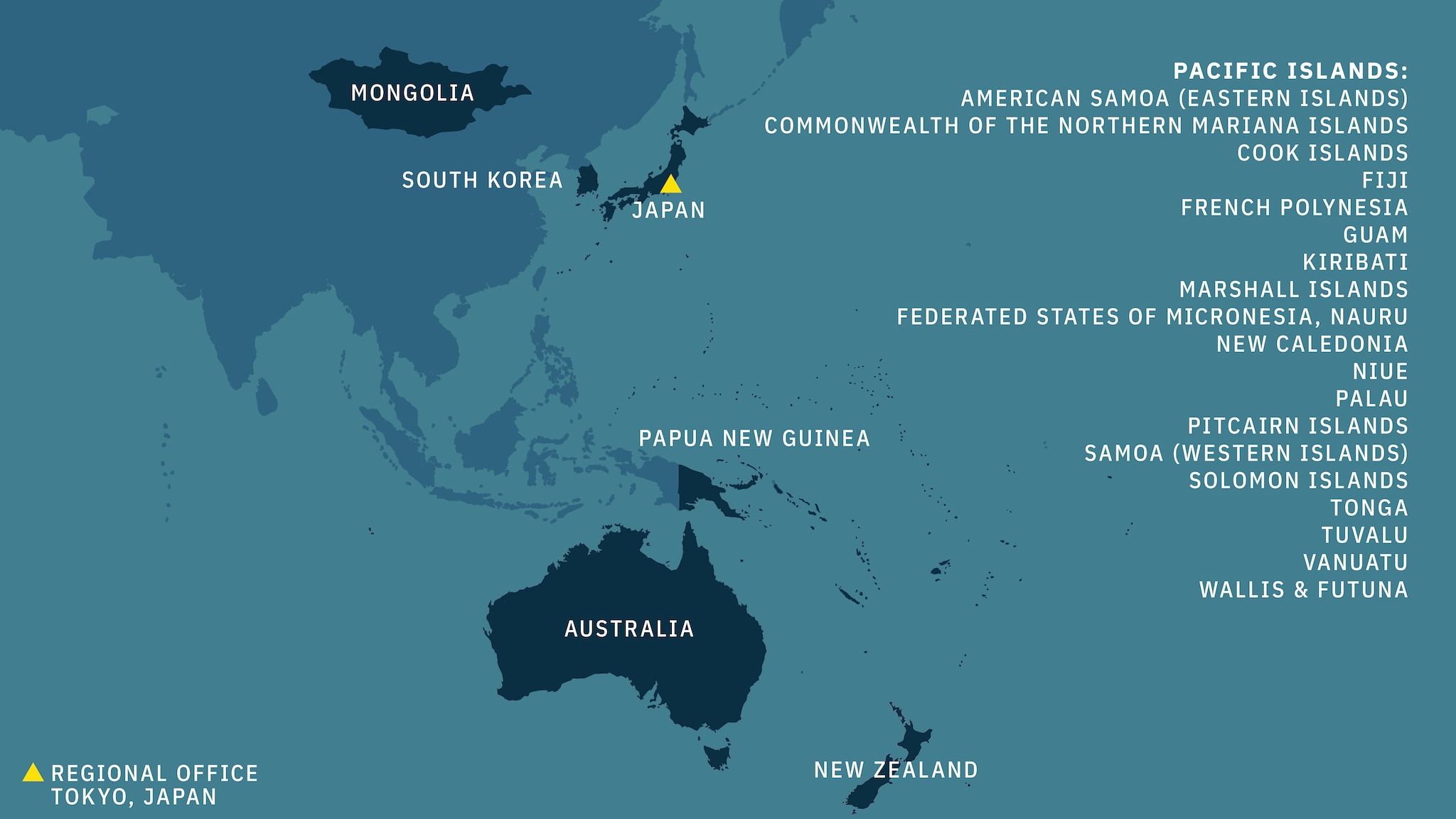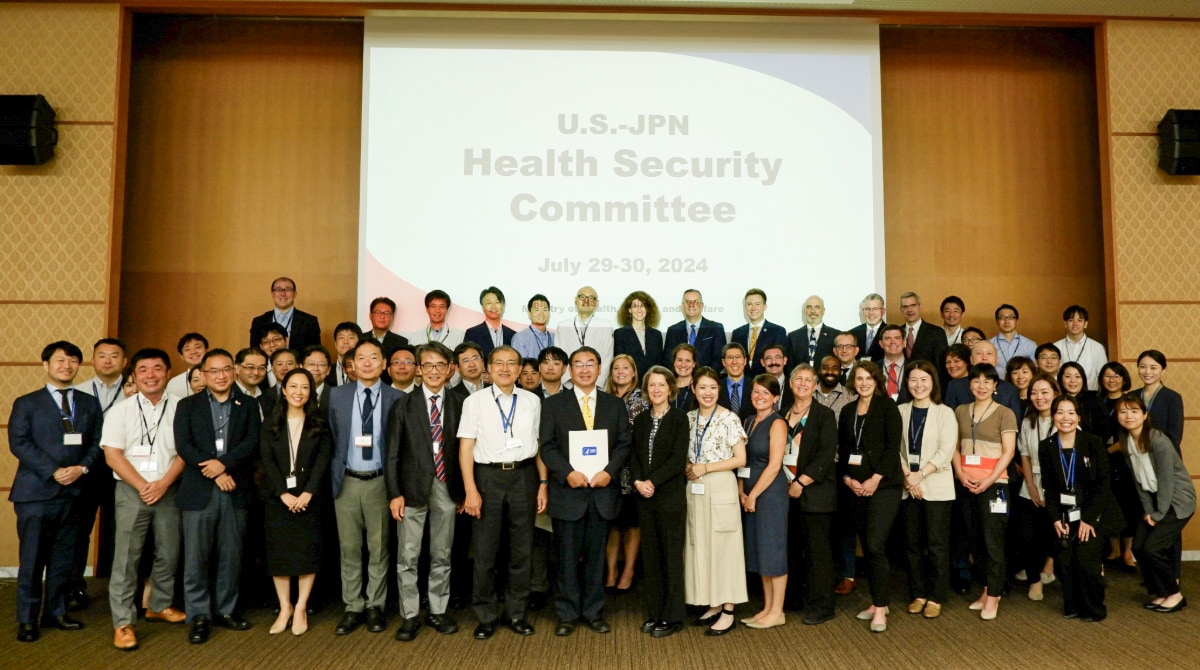At a glance
Launched in 2024, U.S. CDC’s East Asia and Pacific (EAP) Regional Office, located in Tokyo, Japan, is positioned to collaborate with 26 countries and territories in the region to strengthen core global health security capacities. Strategic global partnerships strengthen health systems in the region, reducing strain on U.S. resources and enhancing readiness against health threats. U.S. CDC advances regional health security to make America safer, stronger, and more prosperous.

Overview
[DRAFT LANGUAGE]
The CDC East Asia and Pacific (EAP) Regional Office is strategically located in Tokyo, Japan and works across an expansive region to strengthen core global health security capacities. CDC's presence in the region makes it well-situated to enhance strategic collaboration bilaterally with countries including Japan, Korea, and Australia, and multilaterally to address regional priorities.
The EAP Regional Office elevates the U.S. voice within the region through partnership with organizations such as the APEC and the Pacific Community. The EAP Regional Office fosters stronger collaboration and partnerships, significantly improving the ability to detect public health threats across the region. Additionally, it facilitates improved information exchange and shared best practices within the region. These efforts promote effective global health security and bolster regional global health security cooperation.

Key areas of focus
Working together, CDC and partners will:
- Strengthen collaboration and partnerships with partner governments, international organizations, academia, and other public and private partners to improve regional and global health security.
- Improve detection and rapid response to emerging threats and diseases of public health importance.
- Improve knowledge and information exchange between U.S. CDC and the region on effective public health practices and public health threats.
Regional goals
U.S. CDC and partners are collaborating to:
- Enhance existing and develop new partnerships to advance health security priorities.
- Enhance and expand the public health workforce.
- Strengthen the capacity of governments to effectively respond to public health emergencies.
- Enhance partner country use of data to improve public health response and development of policy.
- Strengthen standardized surveillance systems to better understand and predict disease trends.
- Promote science and innovation in public health.
- Strengthen public health laboratories.
- Improve ability of countries in the region to address vaccine preventable diseases.
- Work to eliminate diseases of public health importance.
Success story spotlight
CDC participates in U.S.-Japan Health Security Committee

CDC participated in the 2nd U.S.-Japan Health Security Committee meeting in Tokyo, Japan, July 29–30, 2024. Secretary of Health and Human Services Xavier Becerra and Minister of Health, Labour and Welfare Keizo Takemi signed a Letter of Intent in 2023 to encourage forums and public health technical exchanges between the two countries. The Health Security Committee meeting stands as a testament to the strong partnership between the two nations in addressing some of the most pressing health security challenges and serves as a forum to support bilateral and regional collaboration on public health emergency management, medical countermeasures, and global health security strengthening.
CDC and Japan's Ministry of Health, Labour and Welfare (MHLW), National Institute of Infectious Diseases (NIID), and National Center for Global Health and Medicine (NCGM) initiated discussions to bolster information exchange related to public health events, fortify global health security efforts, and deepen bilateral and regional coordination.
The event also highlighted the strategic importance of CDC's East Asia and Pacific (EAP) Regional Office. Speakers from both Japan and the United States emphasized the role the Regional Office is already advancing these collaborations and future opportunities that will benefit from CDC's presence in the region.